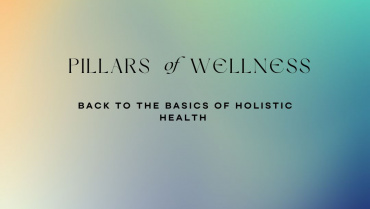Over the last 18 months, BeWell has seen more clients struggling with anxiety than we’ve seen in our 30 years of practice. While a surprising portion of these clients are young, ranging from high school years through mid-30s, the relative increase in anxiety symptoms is happening across all age groups.
Public health data from across the United States shows this rise in anxiety is not unique to BeWell. According to the most recent World Happiness Report, Americans report being less happy in 2018 than they were in 2008. In fact, this trajectory toward anxiety and depression is happening across nearly all wealthy, developed nations. These days, it can feel as though anxiety is the background hum in the air, the water we swim through every day.
A simple small chat with a friend, neighbor, or family member is a reminder of just how normalized anxiety has become:
“How are you doing?”
“Busy. Stressed. Overwhelmed.“
What’s at the core of this increase in anxiety?
If you guessed cell phones, you’re right. If you guessed work-life balance, video games, or social media – ding, ding, ding! All correct.
At the core of this anxiety surge is device dependency. This is also commonly referred to as screen time, but it’s not strictly the screen that is the issue. Tech devices such as smartphones, laptops, video game consoles, and headphones make it possible for an individual to be influenced by the outside world at all times. Studies indicate most Americans are on their phone within 15 minutes of waking. For many of my clients, it’s more like 15 seconds, mainly because the phone has become the alarm.
The day of a typical American day looks like this:
- Wake to the alarm set on your smartphone, scroll for a few minutes to wake up.
- Read the morning headlines or listen to the news on your commute.
- Work at a computer with at least 20 emails per day and multiple tabs open.
- Maintain social connection through open-ended text conversations.
- Listen to a podcast, the news, or music on the commute home and while making dinner.
- Decompress by watching a movie, playing a video game, or scrolling social media.
- Set your alarm on your phone and repeat the next day.
Studies show many young people have never gone more than six minutes without interacting with digital content. This is an existential threat to young people’s ability to adapt and navigate their current lives and the future world. But it’s not just young people glued to screens. For the last 18 months, nearly all adults have been working virtually, screens becoming the workplace, each tab a different meeting room.
This constant stimulation is what Georgetown University Professor of Theoretical Computer Science Cal Newport calls the hyperactive hive mind. When the hyperactive hive mind calls (which is now all of the time), we must constantly switch between projects, roles, responsibilities, and conversations. This context switching pulls us from problem-solving, focused production, and the ability to think deeply.
This isn’t simply a hypothesis; it’s backed by data.
The U.S. Bureau of Labor Statistics measures labor productivity for the business sector. The numbers indicate that productivity in the knowledge space has been flat for over 15 years! Imagine that – while the United States has achieved tremendous advances in technology, resources, and tools for the modern workplace, productivity has stagnated! And that doesn’t even calculate the extra off-the-book hours most Americans report working daily and weekly.
More technology + more work hours = less productivity.
How does this increase in device dependency create more anxiety?
There are two primary reasons the increases in technology have increased rates of anxiety.
The first reason is dopamine.
Dopamine, a neurotransmitter that is normal in a healthy human brain, produces feelings of pleasure and reward.
When you do something you enjoy, dopamine is released.
Yum! Fun! Yay!
The hit of pleasure and reward (dopamine) increases the likelihood you’ll do this enjoyable activity again.
More yum! More fun! More yay!
However, to keep your brain healthy and in a balanced state, the more you participate in the enjoyable activity, the brain will adapt by downregulating dopamine receptors.
Less yum. Less fun. Less yay.
To counteract this downregulation, many (okay, most) people simply repeat the enjoyable activity, seeking those feelings of pleasure and reward.
Where’s the yum? Where’s the fun? Where’s the yay?
Over time, the individual has to keep repeating the once enjoyable activity to feel pleasure and reward and even feel normal. If the person tries to disengage from the activity, they experience a comedown, hangover, or withdrawal.
No more yum. No more fun. No more yay.
By this point in the dopamine downregulation, the pleasure and reward are gone, and what’s left is a classic case of addiction.
And a hallmark symptom of addiction is anxiety.
Dr. Anna Lembke, psychiatrist and chief of the Stanford University Addiction Clinic, published a Wall Street Journal article in August 2021 investigating the intersection of dopamine addiction and devices in our modern world.
“There is also a whole new class of electronic addictions that didn’t exist until about 20 years ago,” she writes. “Texting, tweeting, surfing the web, online shopping, and gambling.”
Today’s devices and the programs installed on them are engineered to generate the greatest hit of dopamine the creators can muster. The more frequent device use, the more dopamine-dependent one becomes. The more dopamine-dependent one becomes, the greater one’s anxiety grows.
This appears to be the story for the majority of Americans today.
The second reason devices have increased anxiety is solitude. Or, more precisely, a lack of solitude. Paralleling the explosion of dopamine-triggering devices over the last 20 years has been a proportionate decrease in time spent in solitude.
Solitude is defined as the absence of input from other people’s minds. This comes in the form of images (social media, games), video (TV, movies), text (headlines, blogs), and audio (podcasts, news, audiobooks). Being alone does not inherently create solitude, as one can be involved in nearly all of these digital mediums while physically alone in a room. And similarly, solitude does not necessarily require one to be physically alone in a room, as multiple people can sit in quiet meditation or relaxation without external input.
Solitude is a human need; The human brain requires solitude.
“[Solitude] allows the nervous system to relax, which is critical for health,” explains Cal Newport, the author and professor cited previously.
As a practitioner, I think of solitude as a supplement. Of course, one can have too much solitude – one can overconsume nearly any supplement! Too much isolation and solitude are distressing for humans who are naturally social. But in appropriate doses, solitude is a vitamin for health. There is a daily need for this metaphorical supplement.
So what can we do to relieve anxiety?
In a world of context switching, device-dependency, and a lack of solitude, we have created a perfect environment for anxiety. It’s up to each of us to tweak and improve our environment, one variable at a time, to reverse anxiety.
1. Limit screen time
You probably saw this answer coming, and we’re intentionally setting it as number one. Smartphones use alerts, buzzers, and badges to constantly request your attention. Instead of using your smartphone as a multi-tool that you must have on you at all times, try using separate devices for separate tasks to minimize the number of occasions you interact with your smartphone’s screen (full of those notifications demanding responses).
For example, instead of using your smartphone as a camera, why not use a separate digital camera? Or invest in a GPS device specifically for your car, so your smartphone isn’t interrupting your attention with new alerts throughout every trip.
I recently took a big step by taking email off of my smartphone. My emails, whether personal or work, are still handled every day, but now I choose when to participate in the task and then shut it down rather than my smartphone interrupting me with inbox notifications throughout the day. I’ve been truly surprised by how much calmer and more present I am throughout the day.
2. Don’t guess, test!
Are your dopamine levels surging? Or are you living at rock bottom levels? Do you even have the building blocks to produce dopamine? Are other neurotransmitters out of balance?
These are the questions that functional testing answers. Functional medicine is always striving for dynamic balance in the body and seeking to identify the root cause of any imbalance. As discussed in this article, anxiety is not simply situational; it has a biochemical basis. If neurotransmitters are out of balance, any other remedy is just a bandaid.
At BeWell, we offer the TRIAD Test by Genova labs. This test includes markers for neurotransmitter status, including dopamine.
3. Targeted supplementation.
Once testing is complete, an identified imbalance can be remedied with targeted supplementation. Supplementation is a wonderful way to replenish levels and repair pathways. At BeWell, we stock various anxiety-remedy supplements, including Neurocalm, CateCholaCalm, StressArrest, and more. But the first step is always testing to identify which of these formulas fit your unique biochemistry.
If you are a current client interested in testing, call or email the office for an appointment with your clinician to get started. For new clients, start with a Free 15-Minute Phone Consultation with BeWell Founder and Senior Nutritionist Monica Montag. Call or email to schedule.
In good health,






Add Comment